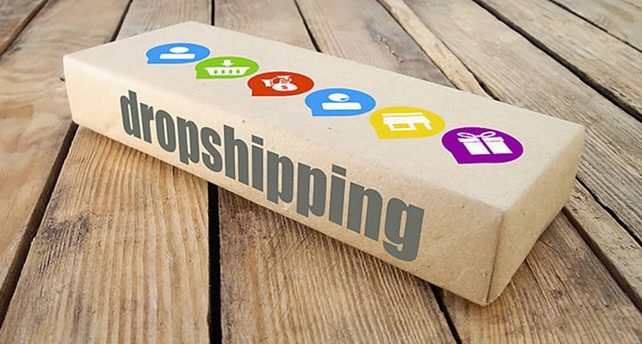- New York, 88 Main street
- +1(929)560-0581 (the call is free)
- Mon-Sun 9.00 - 18.00
- info@tiny-deals.com
- View on map
+1(929)560-0581 Mon-Fr 9a.m.-6p.m.
Email info@tiny-deals.com
Address
17 Expert Tips You Need to Know Before Starting a Dropshipping Store

Starting a dropshipping store is a great move, especially considering its low barriers to entry and the convenience of not having to manage logistics or inventory. However, before you dive in, it’s important to understand that success in dropshipping requires careful planning and strategy, especially with fierce competition in the market.
This guide offers expert advice to help you build a dropshipping store that thrives from the start, avoiding common pitfalls. Let's get into it.
What You Should Know Before Starting a Dropshipping Store
1. Choose the Right Niche
Your niche is the foundation of your dropshipping store. It refers to a specific segment of the market that you will target. Specializing in a niche helps your store stand out from generic shops and makes it easier to attract your target audience.
Make sure to select a niche that you are passionate about, in high demand, and profitable. Use tools like Google Trends to research and identify trending products. Avoid fragile, copyrighted, or overly complicated items, as they don’t perform well in the dropshipping model.
2. Master SEO
Search Engine Optimization (SEO) is crucial for driving traffic to your dropshipping store. By optimizing your store for search engines, you increase the chances of attracting organic visitors and potential customers.
Focus on optimizing your titles, meta descriptions, and content for keywords relevant to your niche. Investing in SEO experts or learning SEO basics yourself can make a significant difference in the long run.
3. Pick a Strong Domain Name
Your domain name represents your store, so choose one that is simple, memorable, and related to your niche. A good domain name should be easy to recall and short, ideally incorporating a primary keyword without being overly complicated.
4. Maintain Stock Availability
Nothing frustrates customers more than canceled orders due to out-of-stock products. Partner with reliable suppliers who update their stock levels regularly, either manually or through an automated system. This ensures you know when to pull items from your store or refresh stock to avoid disappointment.
Using an automated system, like the one offered by Chinabrands, can streamline this process by automatically syncing product availability with your store.
5. Research Your Suppliers Carefully
The suppliers you choose can make or break your business. It’s crucial to select trustworthy partners with good customer reviews, solid logistics, and excellent customer service.
Take the time to research suppliers, ask for references, and verify their delivery times and quality standards. Establishing strong relationships with your suppliers will help ensure smooth operations.
6. Check Shipping Times
Long shipping times are one of the biggest complaints from dropshipping customers. When selecting a supplier, ensure their estimated delivery times are reasonable and consider working with suppliers who have multiple warehouses globally to speed up delivery times.
For instance, Chinabrands has warehouses spread across various countries, allowing them to offer faster delivery times and better customer satisfaction.
7. Invest in High-Quality Product Images
The quality of your product images plays a huge role in your customer’s decision-making process. Invest in high-quality photography or hire a professional to create compelling images that make your products stand out.
Alternatively, you can use supplier-provided images if they meet the quality standards. High-quality images increase your store’s credibility and boost conversions.
8. Ensure a User-Friendly Website
A user-friendly website is essential for keeping customers engaged. Ensure that your store is easy to navigate, from the homepage to checkout. A well-designed layout, clear product categories, and a smooth checkout process will keep bounce rates low and increase conversions.
Don’t forget to optimize your website for mobile devices, as many customers shop via their smartphones.
9. Choose the Right Payment Gateways
Offering secure and convenient payment options is vital to building trust with customers. Make sure your store supports popular payment methods such as PayPal, credit cards, and other common gateways.
Additionally, prioritize security to protect customer data and prevent fraud.
10. Build an Email List
Email marketing remains one of the most effective ways to engage with customers and encourage repeat sales. Collect email addresses from visitors and customers through opt-in forms on your store and blog.
Building an email list allows you to stay in touch with potential customers and send them promotional offers, updates, and personalized recommendations.
11. Learn Email Marketing
Email marketing is an invaluable tool for generating sales. By sending well-crafted campaigns to your email list, you can promote new products, share discounts, and build relationships with your audience.
There are plenty of free resources and courses online to help you master email marketing strategies and create effective campaigns for your dropshipping store.
12. Leverage Social Media
In today’s digital age, social media is essential for any online business. Create accounts for your store on platforms like Facebook, Instagram, and Twitter, and actively engage with your followers. Share valuable content, promote products, and run social media ads to grow your audience and strengthen your brand presence.
13. Maintain a Strong Reputation
A good reputation is crucial for the success of your dropshipping store. Customers trust reviews and testimonials more than flashy marketing. Ensure you provide excellent customer service, address negative reviews promptly, and always strive to exceed customer expectations.
Responding to feedback, even negative ones, shows that you care and can help repair any damage to your reputation.
14. Automate Your Dropshipping Processes
Automation tools can save you time and streamline your operations. There are several dropshipping tools available to automate tasks like order processing, inventory management, email marketing, and customer service. Automation allows you to focus on growing your business while maintaining efficiency.
15. Keep an Eye on Competitors
Monitoring your competitors is crucial to staying ahead. Keep track of their pricing, marketing strategies, and product offerings. Understanding their moves can help you refine your strategies and stay competitive in the marketplace.
16. Create High-Quality Blog Content
A blog is a valuable asset for any dropshipping store. It can drive traffic, improve SEO, and educate your audience about your products and services. Focus on creating informative, well-written, and engaging content that offers real value to your readers.
Avoid overly promotional content. Instead, aim to educate and build trust with your audience through quality blog posts.
17. Stay Active and Engaged
Don’t let your store become dormant. Consistently update your product listings, post on social media, write new blog content, and run seasonal promotions to keep customers engaged.
Staying active on your store and social media builds familiarity with your brand and keeps customers coming back.
Conclusion
By implementing these 17 expert tips, you'll be well on your way to building a successful dropshipping store. From choosing the right niche to automating your processes, these strategies will help you lay a strong foundation and stay ahead of the competition. If you need assistance finding suppliers or further guidance on starting your dropshipping journey, feel free to reach out to us.
No posts found
Write a review- New York, 88 Main street
- +1(929)560-0581 (the call is free)
- Mon-Sun 9.00 - 18.00
- info@tiny-deals.com
- View on map




